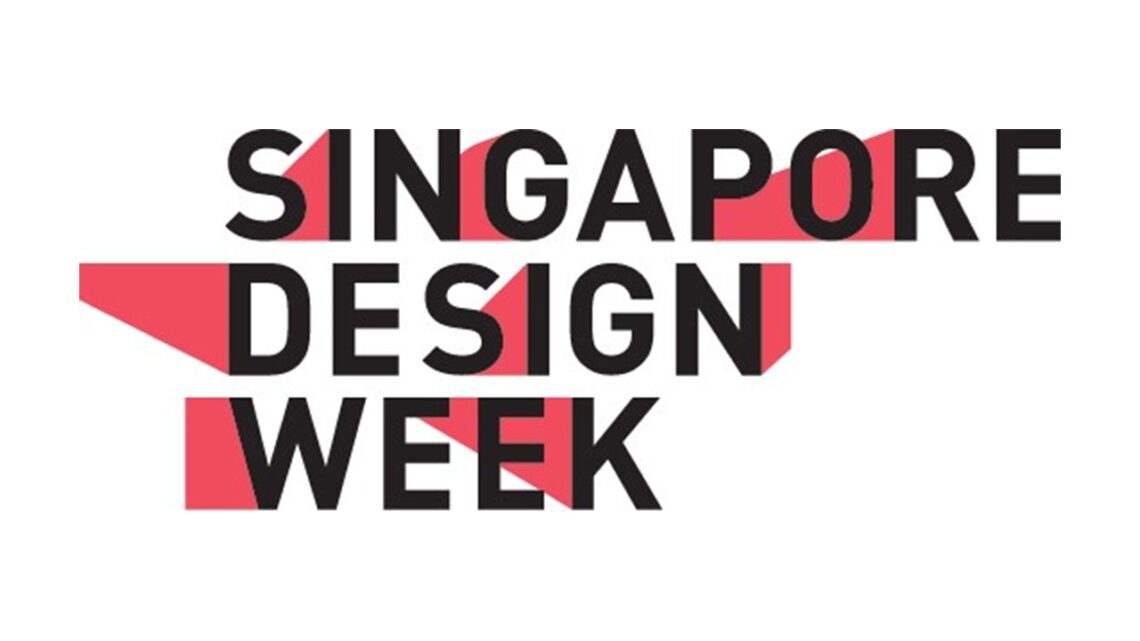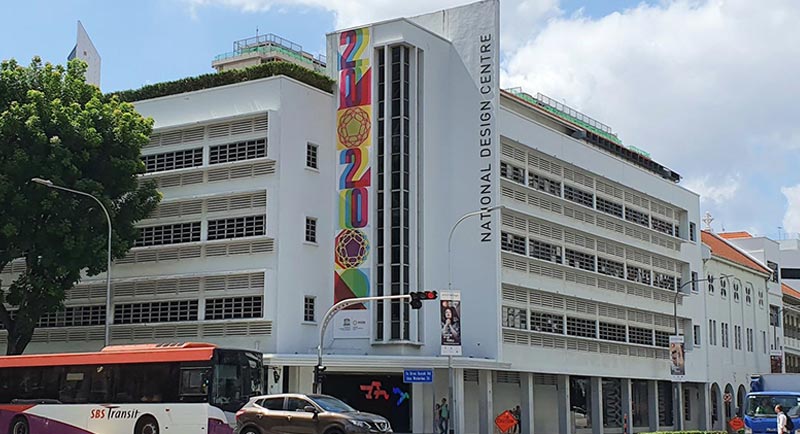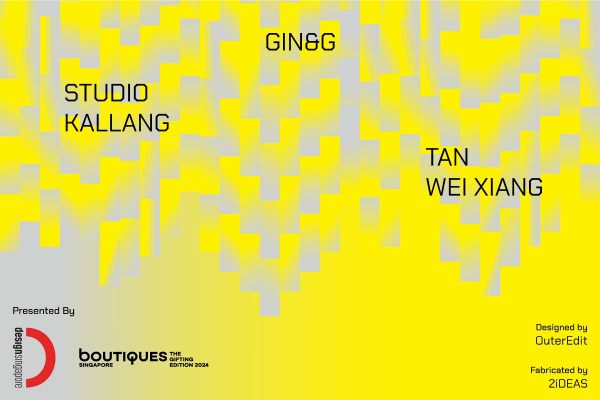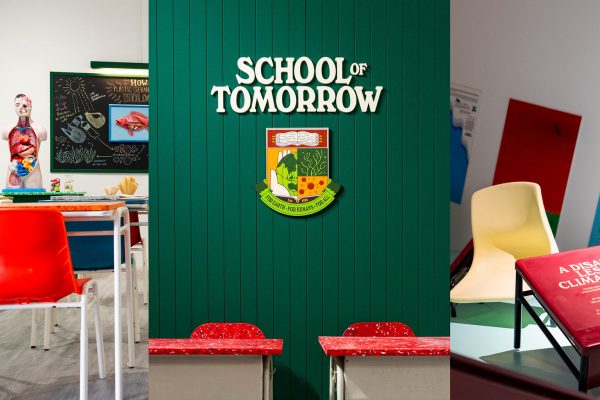For over 30 years, and despite the digital revolution, the creatively inclined have ridden the escalators of the Bras Basah Complex to a mecca of design on the fourth floor. Basheer Graphic Books is much more than a retail business. Owner Abdul Nasser has nurtured a space where personal connections, discovery, and learning shape creative careers.
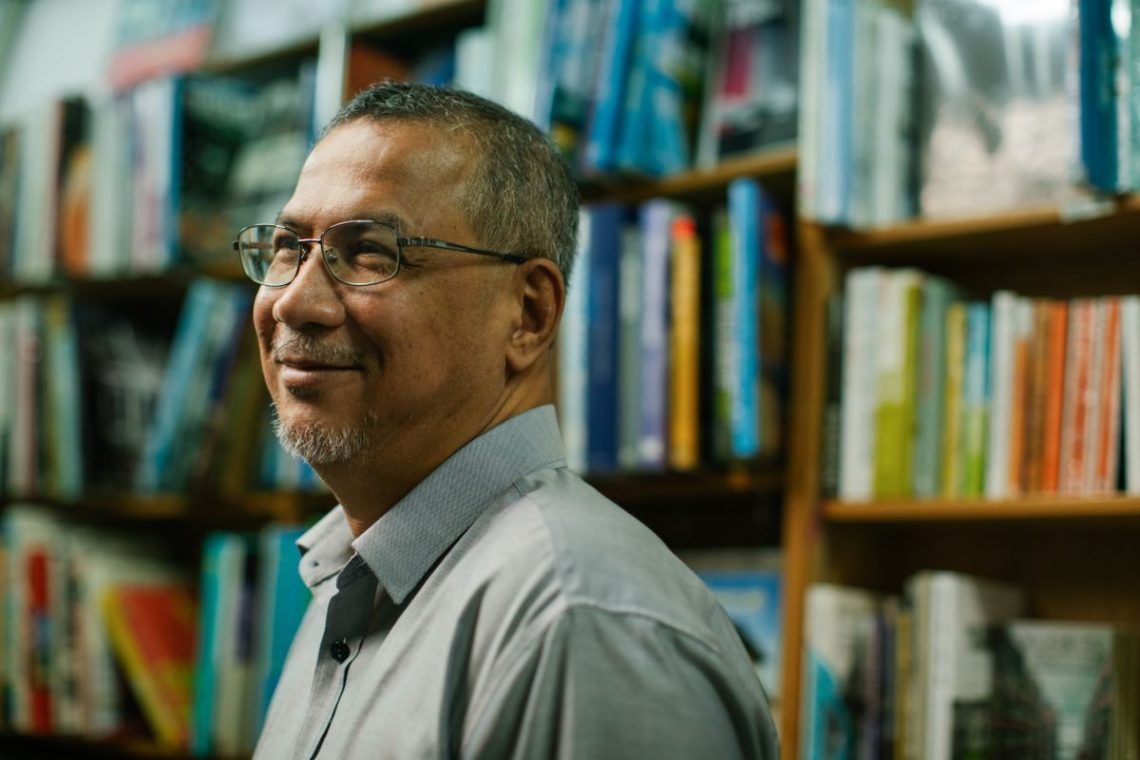
Article by Narelle Yabuka.
A few years ago, Singaporean design writer Justin Zhuang did what many in the local creative scene have done time and again: he brought a design industry friend who was visiting from overseas to Basheer Graphic Books (Basheer).
The unassuming store on the fourth floor of the equally unassuming Bras Basah Complex is known among creatives as a precious mecca for books and magazines about design and art – an open secret of sorts, because the scope and quality of its stock seem too good to be true.
Zhuang’s visiting American friend was a specialist in graphic design – a curator in fact – and when combing through Basheer’s stock he was astonished to find some rare 1990s editions of Typography Papers. The British journal had only been published between 1996 and 2013, and nowadays, hard copies are sought after by typography buffs around the world.
Somehow, several early editions endured among the thousands of titles at Basheer. The thrilled curator purchased one from the Basheer sales team and took it home with him from Singapore to New York.
A short time later, Abdul Nasser, the second-generation owner of Basheer, received two puzzling email enquiries from New York about – you guessed it – Typography Papers. Word had gotten around. One of the messages particularly surprised him, having originated in the internationally renowned design consultancy, Pentagram.

I was scratching my head, wondering how someone from Pentagram knew this old journal was available in my shop. It was sleeping here for years!
— Abdul Nasser
Eventually, of course, he connected the dots via Zhuang who, like so many of his design industry colleagues in Singapore, had come to know Nasser through many years of frequenting the store. Nasser’s readiness to share a smile or remove a book’s cellophane for browsing have enamoured the creative community to him as much as his bookselling tenacity and propensity to hang on to old stock.
With an ear constantly to the ground, Nasser is known for assembling an ever-evolving spectrum of publications ranging from limited-edition local indie zines to timeless theoretical tomes from eras and places afar. Basheer is the kind of bookshop where you can feel the influence of the bookseller’s cataloguing decisions; where you expect to find something you didn’t know existed.
That fascination is perhaps why Basheer has endured while competitors have vanished from more highly trafficked and prestigious malls around town. But this point alone downplays the impact Nasser has had on countless creatives in Singapore and beyond.
The people’s bookseller
Developing his intuition for bookselling took time. Nasser began his career under the wing of his late father, Basheer Ahamed. The latter had begun treading the footpaths of the central business district in the 1970s, selling international newspapers and mainstream magazines directly to offices out of a suitcase.
From the mid-1980s, Nasser began accompanying him on his rounds. The timing was ideal, as government efforts to turn up the dial on Singapore’s industrial design and manufacturing capabilities were happening concurrently.
The pair soon discovered strong demand from design studios and advertising agencies for creative magazines and books. They responded to demand and packed their suitcase with more stock.

We were carrying the heavy suitcase of books and magazines around town by bus and walking. I found it difficult as a 20-year-old, and I thought, ‘How long can my father keep doing this?’
— Abdul Nasser
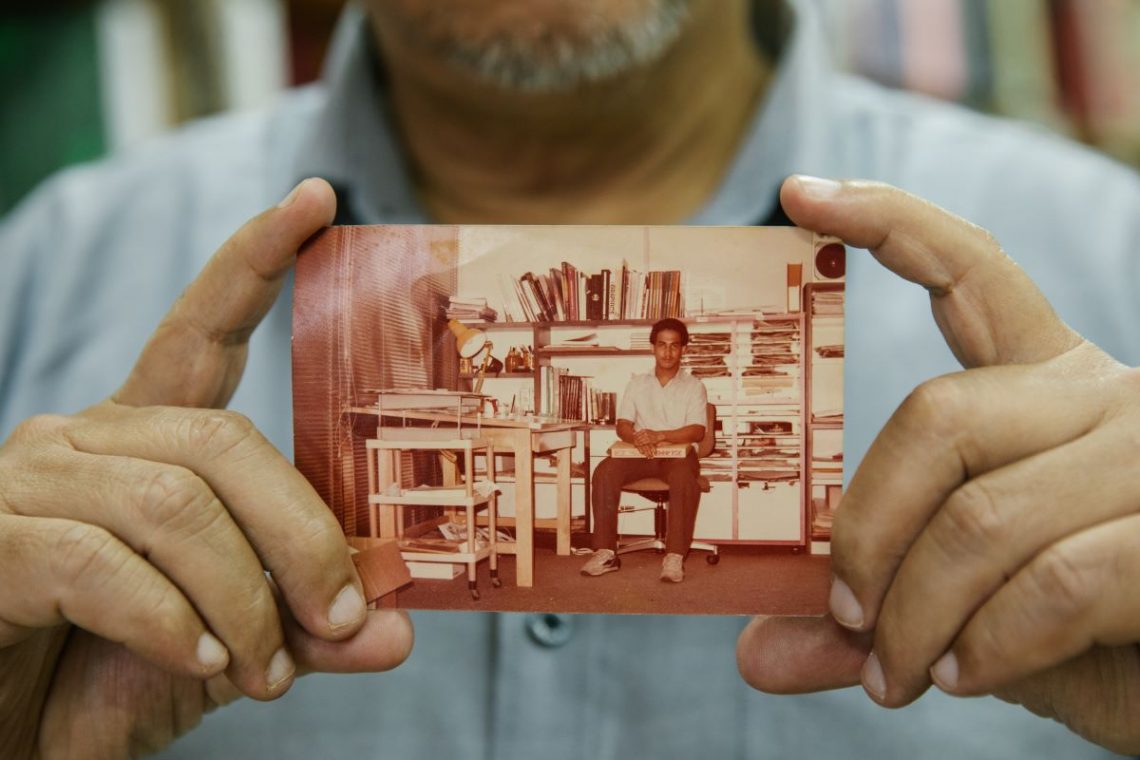
A turning point came when a student intern at a creative agency suggested a visit to Baharuddin Vocational Institute (now Temasek Polytechnic) on Stirling Road. The institute introduced a product design course in 1988, expanding its educational repertoire alongside areas such as advertising arts and interior design.
Recalls Nasser, “I went there to sell books from the classrooms when there were no lectures happening. With three different cohorts, there were a lot of students and some books would sell 20-to-30 copies each. It was an eye opener for me to see this kind of demand.” He was convinced to press on.
Come 1990, with publications piling up in the family’s flat and the neighbours starting to complain, it was time to set down some roots for the business and secure a space to store the growing Basheer inventory. Nasser found one at Bras Basah Complex and, with no signboard and not much by way of furniture, opened Basheer’s first space in unit 02-25 facing the Raffles Hotel.
A couple of years on, Nasser’s father was partially retired and on more-or-less permanent vacation in India. Nasser took the reins of the business and decided it was time for a more customer-friendly public interface. He moved Basheer to its current location, unit 04-19, with a set of second-hand bookshelves and a more-is-more philosophy about stock.
So began decades of pilgrimage by the creative community up the central escalators of the Bras Basah Complex, alongside hobbyists and other professionals with an inclination toward the creative world.
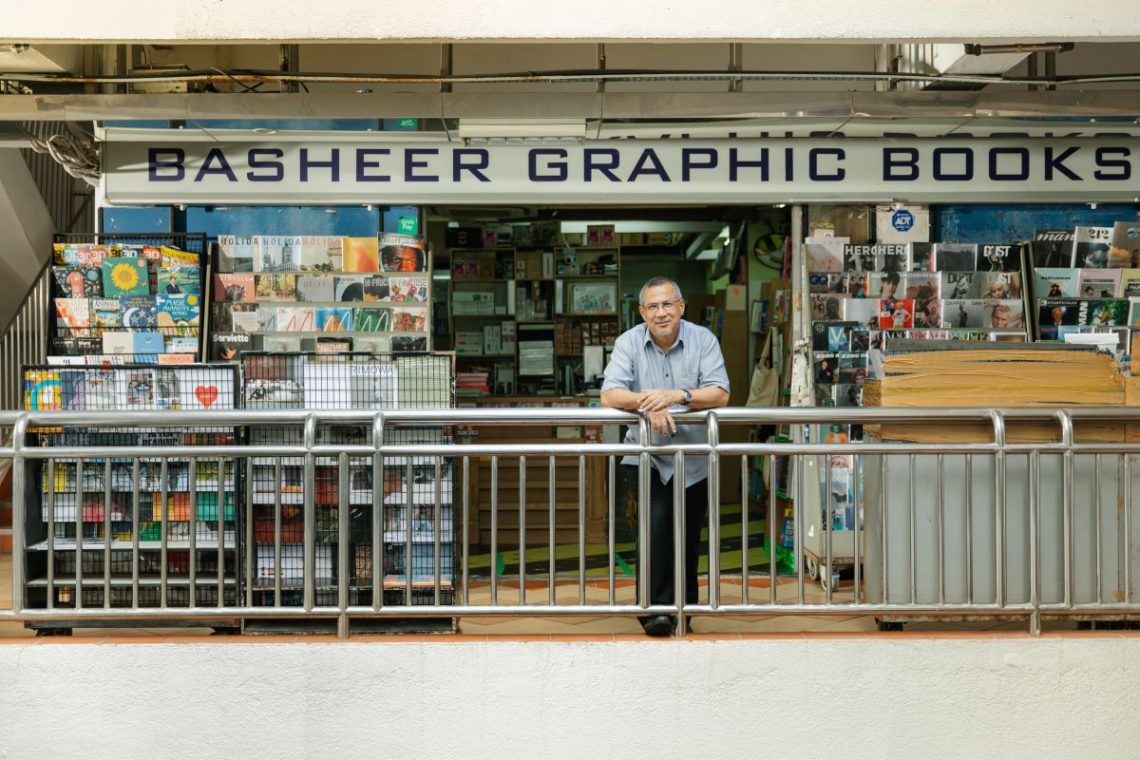
Growing with the design industry
Those hard yards as a mobile vendor had set in place the valuable trajectory of a customer-prioritised approach to retail – an important underpinning for a specialised business. Customer enquiries became a vital means of tracking interest areas before the age of social media. “We listened and put in the effort to bring in certain titles. From there, it built up,” says Nasser.
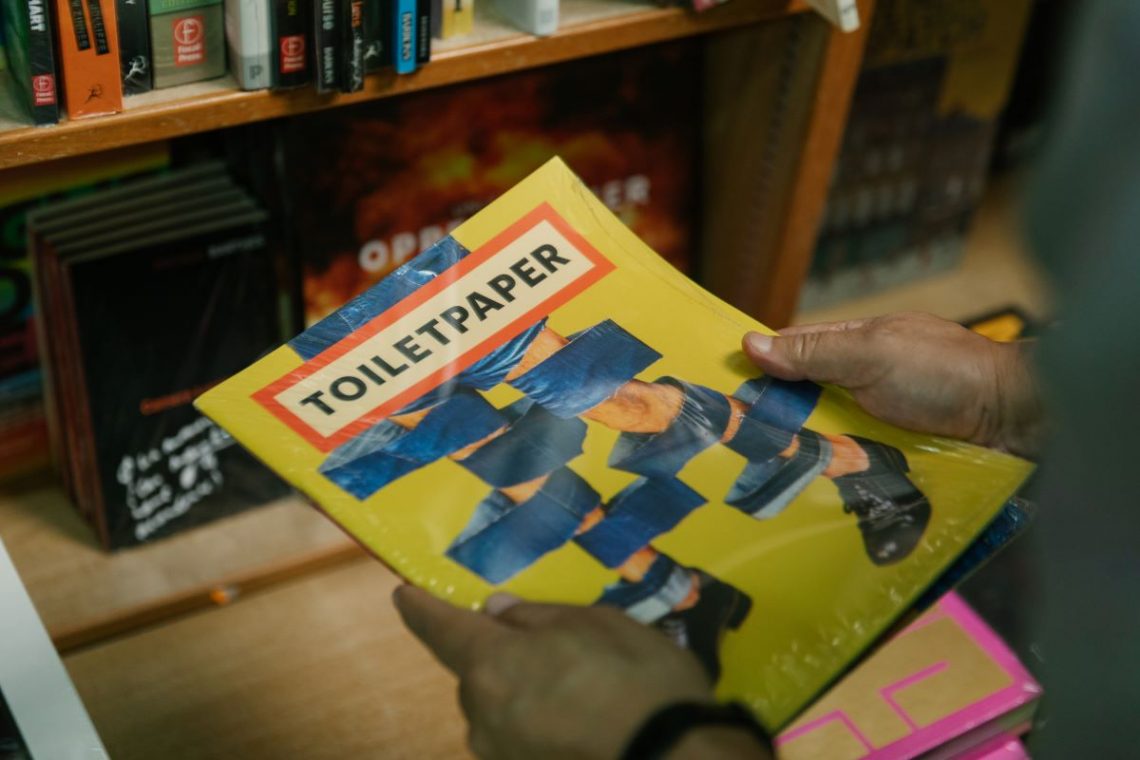
In those pre-internet days, Basheer became a valued conduit for knowledge among Singapore’s creatives. While design professionals flocked there to keep up with industry news and global developments, countless design students also plied the store’s distinctive tiled floor. For both groups, the promise of discovery was instrumental.
“Before we had the internet and Google, Basheer was the place I would go to as a student to look at references,” says Pann Lim, Co-founder and Creative Director of design and advertising agency Kinetic Singapore. Basheer enabled him to witness the evolution of design over time, and to unlock shifts in perspective via the discovery of key publications. “Quite frankly, without Basheer Graphic Books, I would not be the designer I am today,” says the President*s Design Award (P*DA) 2013 ‘Designer of the Year’ recipient.

I will never forget Nasser’s generosity. Knowing that a student was unable to buy some of the expensive books, he would gladly peel away the shrink wrap upon request so I could browse through them.
— Pann Lim
For interdisciplinary designer and P*DA 2023 ‘Design of the Year’ recipient Hunn Wai, Director of Lanzavecchia + Wai, the advice of one of his university tutors to visit Basheer was, as he describes it, “the touchpoint that led us [students] to understand how wide, developed, and rich the creative professions are.” Wai adds, “We were able to see design through local, American, European, and Japanese lenses. It opened up our world to the gamut of design thinking and philosophy.”
Similarly, design writer Luo Jingmei recalls spending hours looking through Basheer’s many books as an architecture student in the 2000s, when digital design news platforms were only just emerging.
Meanwhile, as Singapore’s design publishing scene was finding its feet, Basheer provided a solid home ground for local publications. “I recall the first time I saw iSh magazine on sale there,” says Kelley Cheng (now Creative Director of The Press Room) of the design magazine she founded in 1999. “It was the first publication I ever did, and I felt so happy to see it standing beside many of my favourite magazines,” says the P*DA 2020 ‘Designer of the Year’ recipient.
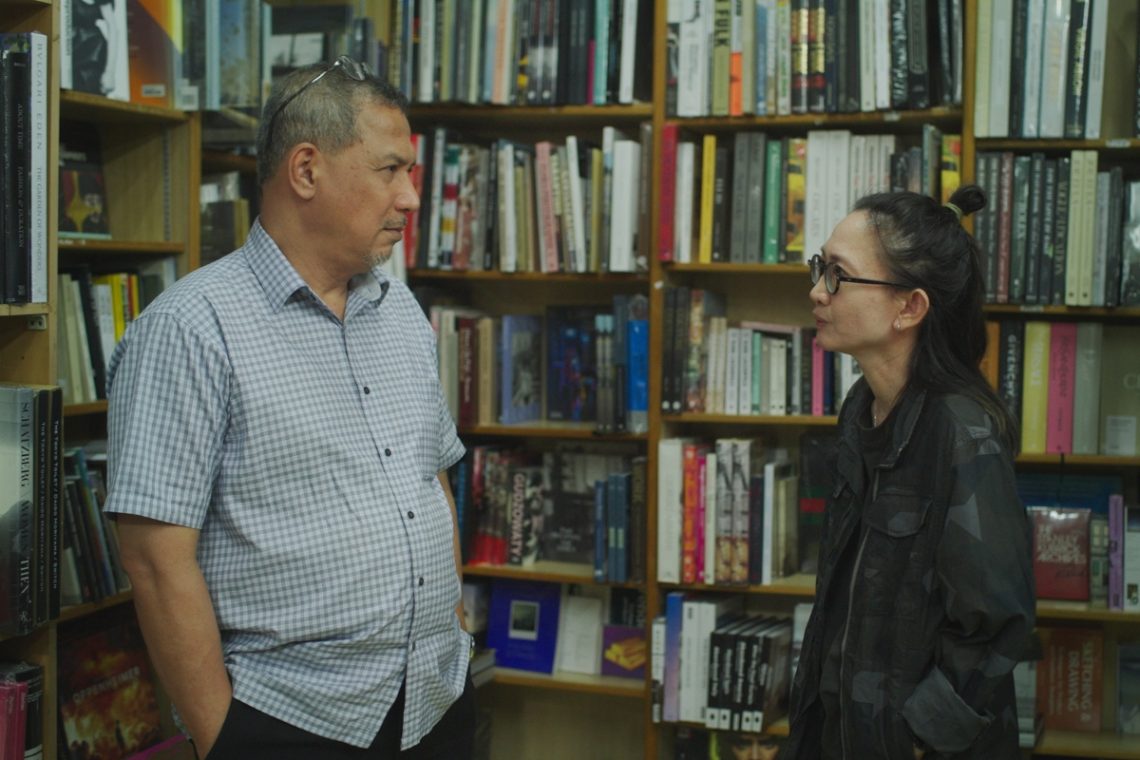
Turning with the digital tide
Riding the 1990s wave of demand for print, Nasser had embarked on a regional expansion. He opened stores in Kuala Lumpur, Jakarta, Bangkok, and Hong Kong, bringing that same ‘treasure trove’ experience to huge new markets that responded as positively as Singapore. But the digital shift was soon underway and by 2016, Nasser had closed all his international outlets bar one in Kuala Lumpur’s Sungei Wang Plaza.
Sales had dropped significantly, and the online evolution happened more quickly than he anticipated. “There was a change in buying habits, and we didn’t understand the pattern at first,” Nasser reflects. Thankfully, his previously established focus on the indie, the local, and the specialised helped Nasser tweak his approach in Singapore and Malaysia.
“Design publishing previously meant big, global design publishers,” he says. They had thrived on the pre-internet demand for exhaustive image-heavy survey books presenting the ‘best of’ from around the world. Now, suggests Nasser, smaller publishers of deeply researched books and magazines are rising alongside those who capitalise on the design aspects of pop-culture trends (as manifested in blockbuster movies, for example, or the Covid-era fashion for house plants).
Nasser has happily stocked best-selling books on local designers such as SCDA, WOHA, Theseus Chan, Kerry Hill Architects, and HYLA. Local indie publications are also more important than ever to Basheer’s catalogue, with both local and international customers keen to soak up the creative spirit of Singapore.

I do carry publications that nobody else has. I can bet on them selling.
— Abdul Nasser
“Nasser is a huge supporter of Rubbish Famzine, and our zines have been selling there since 2015,” says Lim, who is also an independent publisher. He explains, “We launched issue number 7 at his shop in 2017. It was a fun experience. A simple table was set up and we had a great meet-and-greet session with our fans over a weekend.”
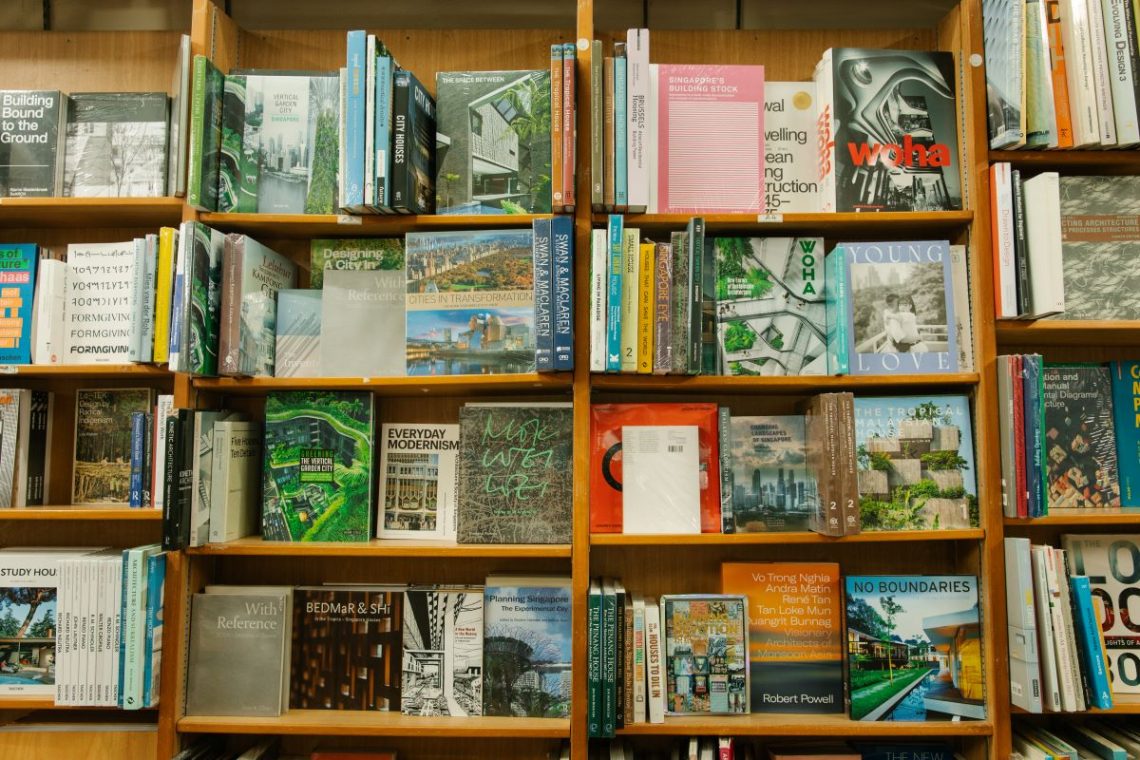
Print will never die
These days, three out of ten walk-in customers at the Bras Basah store are from overseas. Nasser counts regional customers from the Philippines, Indonesia, Vietnam, Malaysia, and Thailand among the bulk of them. The most dedicated customers make a pilgrimage to Basheer on every trip to Singapore, Nasser shares, as they lack access to such a range of titles at home. He has been asked by Indonesian customers when Basheer will return to Jakarta.
International editors are also known to make a beeline. Suzy Annetta, the Editor-in-Chief of interior design magazine Design Anthology (which is stocked at Basheer), got to know Nasser at a bookstand within a design trade fair. Now, Annetta makes it a point to visit the store whenever she’s in Singapore.

Basheer is definitely up there for me and equal to any of the best design bookshops internationally. They always have a great selection of mainstream and obscure titles by big and independent publishers. It’s a bit of a print and design lovers’ paradise.
— Suzy Annetta
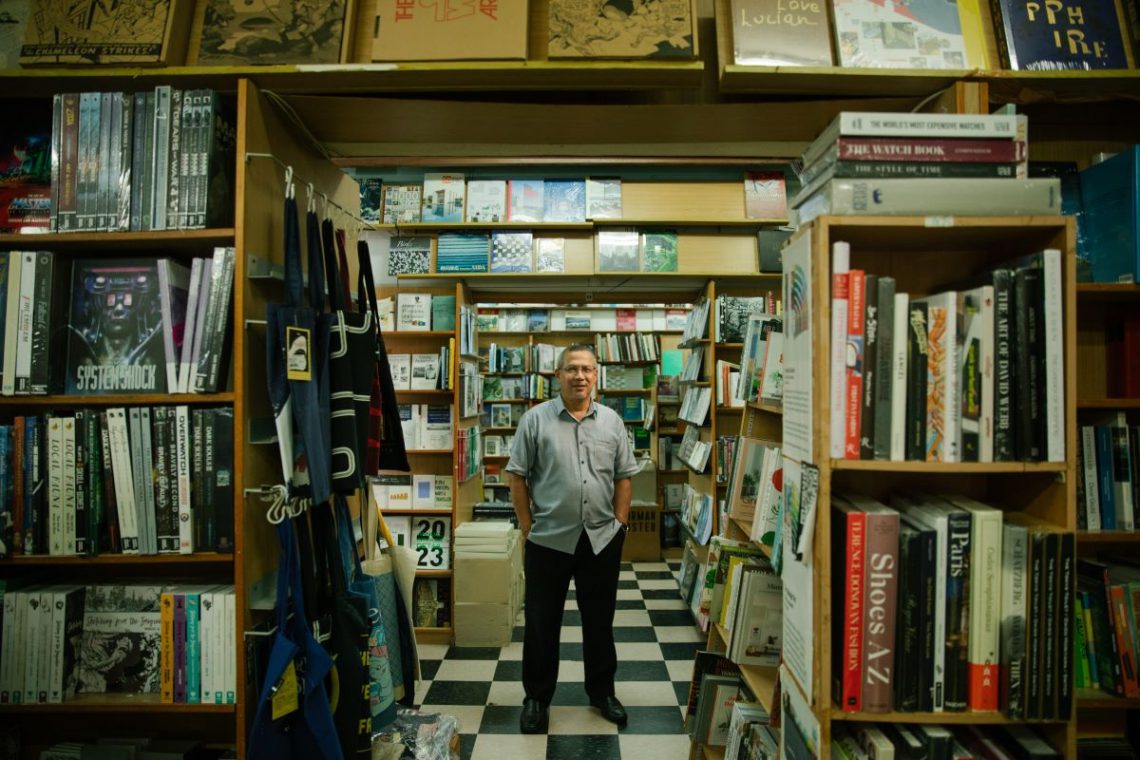
Appreciation from locals has flowed as strongly. Basheer has been the location for wedding and graduation photo shoots – as sure a sign as any of the sense of connection people feel to Nasser, his stock, and his store. “It’s a broad statement, but I think the more we move toward digitality and ephemerality,” says Wai, “the more demand there will be for the crafted analogue. Basheer could be an outlet for that tendency.” Clearly, it already is.
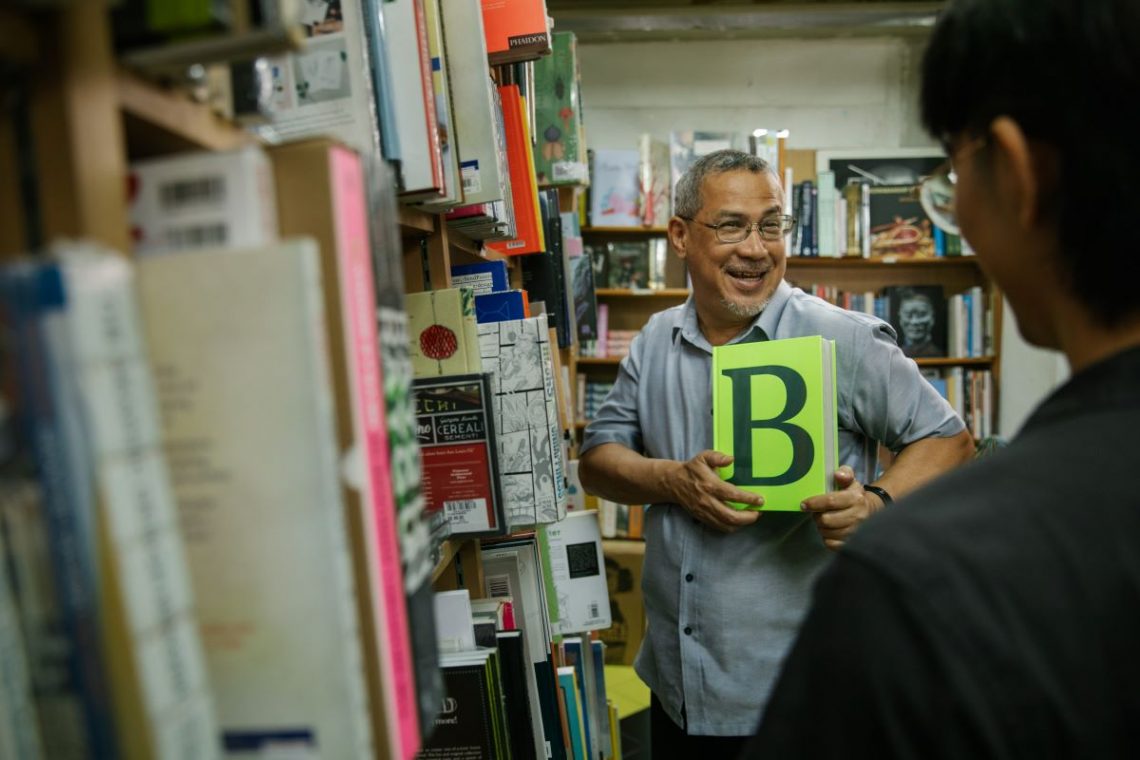
For writer Zhuang, the sense of connection runs deep. He counts Basheer as an influence on his decision to focus on design. “I remember visiting Basheer in the early 2010s to check out the many independent magazines,” he says. “As someone embarking on a freelance career then, it showed me that I could potentially carve out a career writing for these different titles, and maybe start one of my own in future,” he adds. Today, his own books are stocked by Nasser.

Basheer helped me to see that there may be a future in writing about design.
— Justin Zhuang
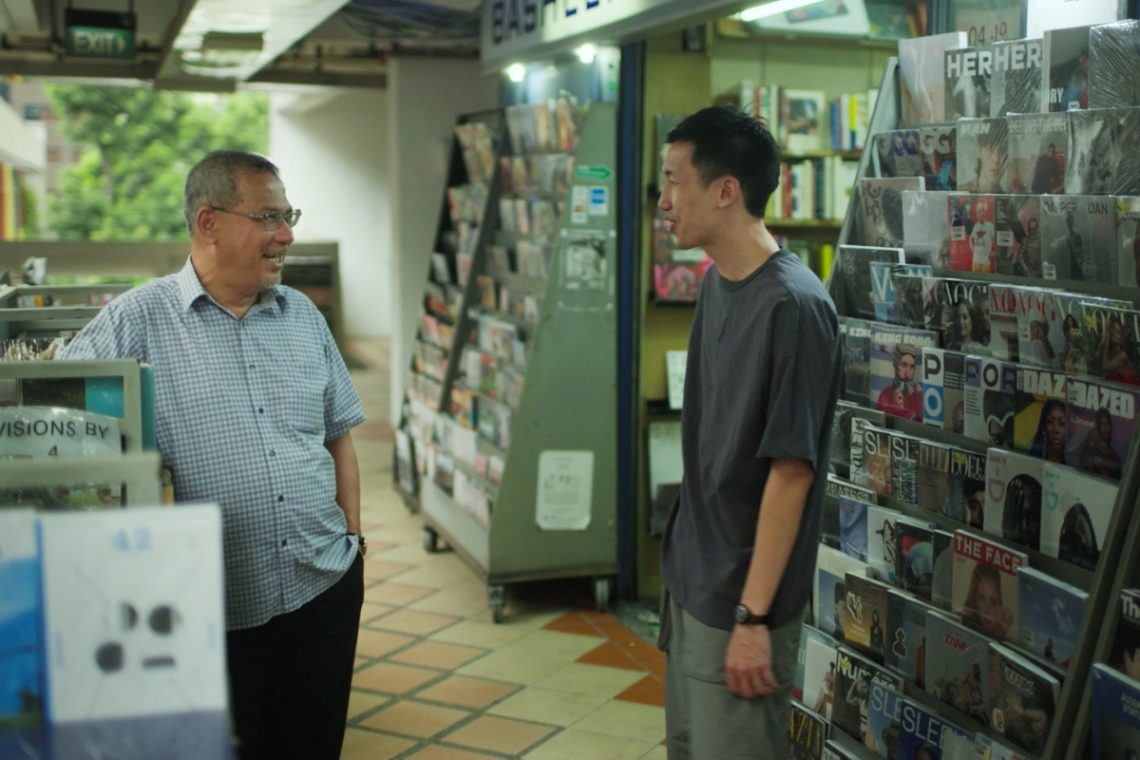
Ever the beacon of humility, Nasser would never boast of his impact on the professional growth of countless creatives from Singapore and the region. But he can’t deny that something special happens in a good bookstore. It is where aspects of our culture are reflected back to us through the carefully chosen array of publications, inviting the kind of multifaceted contemplation that is the genesis of good design.
The items we select to purchase are bets we make on our own self-improvement, forged in partnership with a person who is equally ‘reading’ the culture. There’s no putting a price on that kind of reciprocal exchange.
Do you know someone who harnesses the power of design to improve lives? Nominate them for the “People of Design” initiative for an opportunity to be featured!

